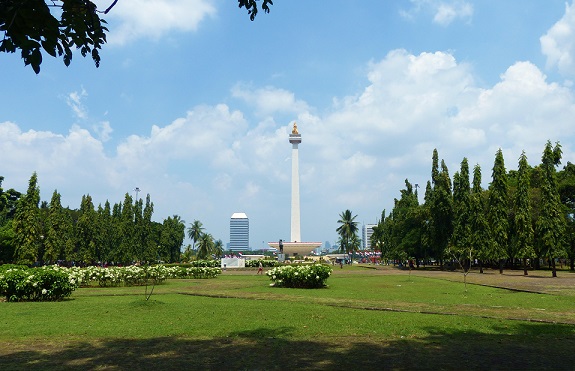Be aware that there are scammers active on WA pretending to be Indonesia Investments
11 May 2025 (closed)
Jakarta Composite Index (6,832.80) +5.05 +0.07%
Financial Update Indonesia: Rupiah vs Dollar & Forex Reserves
The central bank of Indonesia announced that the country’s foreign exchange reserves declined USD $900 million to USD $111.1 billion at the end of November 2014. The decline was primarily due to government debt repayments and the central bank’s use of foreign exchange to engage in monetary management. Meanwhile, the Indonesian rupiah exchange rate - which had touched six year lows in recent days - appreciated 0.08 percent to IDR 12,299 per US dollar on Friday (05/12) based on the Bloomberg Dollar Index.

In line with the global trend, Indonesia’s rupiah has been depreciating against the US dollar. The latter has been experiencing bullish momentum after the winding down of the Federal Reserve’s bond-buying program and the looming ending of near zero interest rates in the USA. On Thursday (04/12), the Fed’s beige Book signaled improvement in US employment, boosting the US dollar ahead of their next policy meeting on 16-17 December 2014.
Indonesia’s central bank (Bank Indonesia) is not expected to intervene in the market (for example by selling US dollars) to support the rupiah exchange rate as the weak rupiah rate makes the country’s exports more attractive while imports have become more expensive. This situation is regarded conducive to curb the country’s wide current account deficit. Bank Indonesia stated previously that it expects the current account deficit to narrow to about 3 percent of gross domestic product (GDP) by the year-end (from 3.3 percent of GDP last year). Improving the current account balance is vital to gain investors’ confidence.
Moreover, given the US dollar’s current bullish momentum it would be largely in vain to use the country’s forex reserves to support the rupiah (the rupiah is expected to continue its depreciating trend against the US dollar in the months ahead). It would be better for the central bank to accumulate forex ahead of the next global shock (looming higher US interest rates in the second quarter of 2015) in order to enhance foreign investors’ confidence in the financial fundamentals of Indonesia. Compared to its regional peers, Indonesia currently has limited foreign exchange reserves at USD $111.1 billion thus making it vulnerable to sudden capital outflows in times of global shocks.
Bank Indonesia said that its foreign exchange assets of USD $111.1 billion at end-November cover 6.6 months of imports or 6.4 months of imports and servicing of government offshore debt repayment. Although the central bank stated that this figure is well above international standards of reserve adequacy (at three months of imports), it is below the reserve adequacy of Malaysia (8.8 months of import) and the Philippines (10.8 months).
Indonesia's Foreign Exchange Reserves 2008-2014:
| 2008 | 2009 |
2010 | 2011 | 2012 | 2013 | 2014² | |
| Foreign Exchange Reserves¹ |
51.6 | 66.1 | 96.2 | 110.1 | 112.8 | 99.4 | 111.1 |
¹ in billion US dollar
² at end November 2014
Source: Bank Indonesia
Bank Indonesia's benchmark rupiah rate (Jakarta Interbank Spot Dollar Rate, abbreviated JISDOR) appreciated 0.17 percent to IDR 12,296 per US dollar on Friday (05/12).
Key Findings:
• Indonesia’s foreign exchange (forex) reserves fell to USD $111.1 billion at end-November 2014
• The forex reserves of Indonesia are low compared to regional peers. This erodes investors’ confidence and thus makes the country more susceptible to capital outflows in times of global shocks (for example higher US interest rates)
• Amid US monetary tightening and the improving US economy, the US dollar is expected to continue appreciating against other currencies, including the rupiah. As such, it is not expected that Bank Indonesia will intervene too much as this would only deplete the country’s forex reserves

